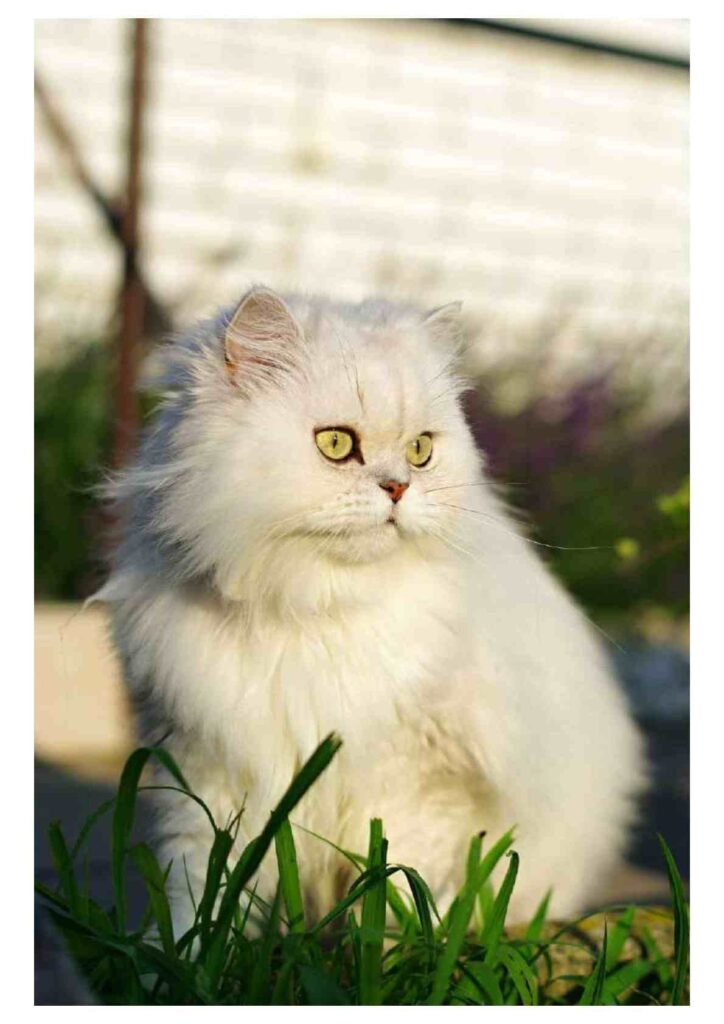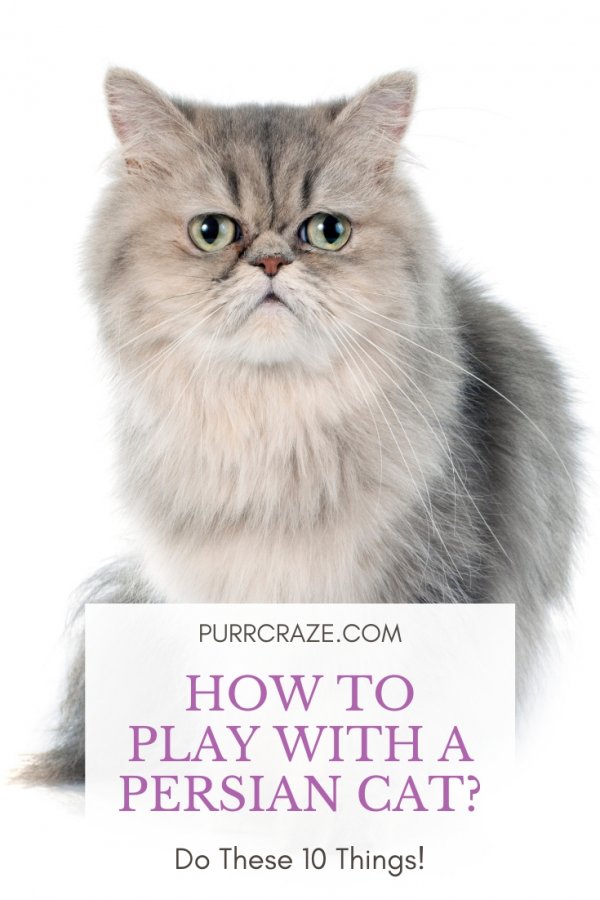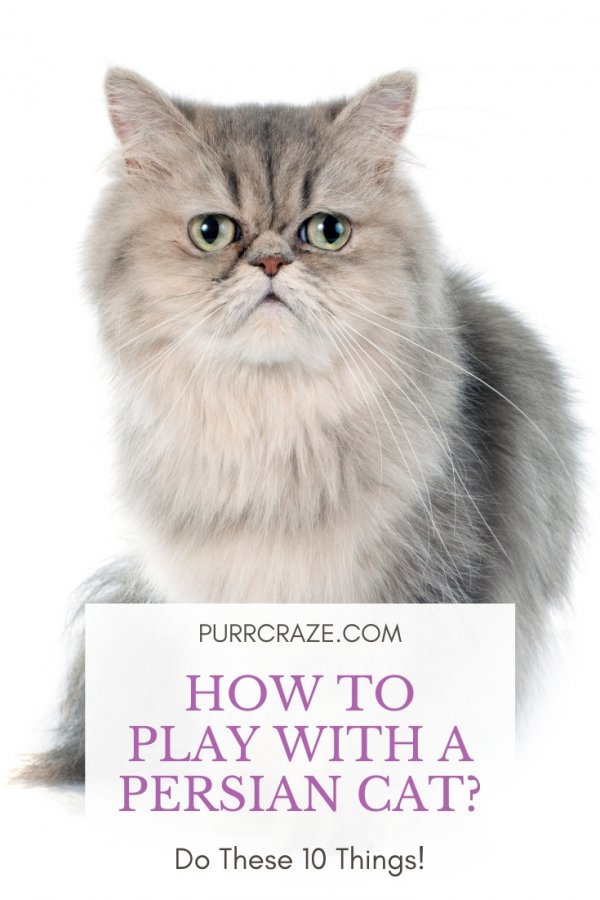Are you a proud owner of a Persian cat? If so, you understand the unique charm and personality of these beautiful cats. But how do you build a strong bond with your feline friend? The answer lies in understanding their needs, preferences, and behavior. In this article, we will explore the secrets to building a deep and lasting bond with your Persian cat. Discover proven tips, expert advice, and heartwarming stories that will help you create a strong connection with your furry companion. Get ready to embark on an exciting journey of companionship and love with your Persian cat!
Building a Bond with Your Persian Cat
If you’ve recently welcomed a beautiful Persian cat into your home, congratulations! These majestic felines are known for their luxurious coats and gentle demeanors. As you embark on this journey with your new fur baby, it’s important to understand the unique characteristics of Persian cats, create a safe environment for them, establish trust and familiarity, and provide proper care and attention. In this comprehensive guide, we will explore the various aspects of building a strong bond with your Persian cat.
Physical Characteristics of Persian Cats
Persian cats are known for their distinctive appearance, with their long, flowing coats and flat faces. Their large, expressive eyes exude a sense of tranquility and grace. These cats come in various color patterns and coat types, including solid, shaded, smoke, tabby, and bi-color. It’s important to note that their long, dense coats require regular grooming to prevent matting and tangles. Additionally, their facial structure may lead to potential health issues, such as eye drainage and breathing difficulties.
Personality Traits of Persian Cats
Persian cats have gentle and calm temperaments, making them ideal companions for those seeking a relaxed and affectionate pet. They are known to be independent but also enjoy the company of their human family. These cats are not typically high-energy or overly demanding and are content with a peaceful and secure environment. However, they may be reserved with strangers initially and take time to warm up to new people or situations. Patience and understanding are key when developing a bond with these sensitive souls.
Breed History and Origins
Persian cats have a long and storied history that dates back to ancient Persia, now modern-day Iran. They were originally prized for their elegant appearance and were treasured pets among the aristocracy. Persian cats were brought to Europe in the 17th century and gained popularity due to their striking appearance. Over time, breeders selectively bred Persian cats to enhance certain physical traits, resulting in the distinct breed we know today. Their regal lineage adds to their charm and allure.
Creating a Safe and Comfortable Environment
Your Persian cat’s well-being and happiness depend on the environment you provide for them. As these cats prefer a peaceful and quiet atmosphere, it’s important to create a safe haven where they can retreat when they need some alone time. Designate a specific space in your home, such as a spare room or a secluded corner, where your cat can relax and recharge. Ensure that the space includes a cozy bed, a litter box, and a water and food bowl for their convenience.
Providing a Quiet Space
Persian cats are sensitive to loud noises and sudden disturbances. To help them feel secure and at ease, it’s essential to provide a quiet space where they can retreat and have some solitude. Consider placing their bed or a comfortable blanket in a low-traffic area of your home, away from noise and commotion. This designated area will serve as their safe haven when they need to escape from the hustle and bustle of daily life.
Ensuring Proper Hygiene
As mentioned earlier, Persian cats have long, luxurious coats that require regular grooming. Their dense fur can easily become matted and tangled if not cared for properly. Make grooming a part of your routine to maintain your Persian cat’s coat in optimal condition. Brush their fur at least once a day using a soft-bristle brush or a comb specifically designed for long-haired cats. This not only keeps their coat free from mats but also promotes a healthy and shiny appearance.

Choosing Suitable Toys and Accessories
Engaging playtime is not only enjoyable for your Persian cat but also an excellent opportunity to strengthen your bond. Provide your cat with a variety of toys that cater to their natural instincts. Plush toys, interactive puzzle toys, and feather wands are great options to stimulate their minds and keep them entertained. Additionally, consider investing in scratching posts to protect your furniture and a sturdy scratching board to satisfy their natural urge to scratch.
Establishing Trust and Familiarity
Building trust is crucial in developing a strong bond with your Persian cat. These cats are sensitive creatures who thrive on consistency, patience, and positive reinforcement. By introducing yourself slowly, using positive reinforcement, and respecting their personal boundaries, you can create a safe and nurturing environment where your Persian cat feels secure and loved.
Introducing Yourself Slowly
When bringing your Persian cat home for the first time, it’s important to allow them to adjust at their own pace. Set up a designated area for them, complete with food, water, litter box, and a cozy bed. Give them some time to explore and become familiar with their surroundings. Avoid overwhelming them with too much attention initially, as they may feel anxious or scared. Gradually spend more time with them, offering gentle affection and praise to help them feel comfortable in your presence.
Using Positive Reinforcement
Persian cats respond well to positive reinforcement techniques. Reward their good behavior with treats, praise, and gentle petting. This will help them associate your presence with positive experiences, strengthening the bond between you. Avoid using punishment or harsh discipline, as it can cause fear and anxiety, which may hinder the trust-building process.
Respecting Personal Boundaries
Persian cats value their personal space and need time alone to recharge. Respect their boundaries and avoid forcing them into interactions they are not comfortable with. Allow them to come to you when they feel ready for affection, and observe their body language for cues. When they seek solace in their designated quiet space, refrain from disturbing them unnecessarily. Respecting their need for space demonstrates your understanding and deepens the trust they have in you.
Feeding and Nutrition
Maintaining a well-balanced diet is essential for your Persian cat’s overall health and well-being. Selecting high-quality cat food, determining proper portion sizes, and considering dietary supplements are all important aspects of providing optimal nutrition for your furry friend.

Selecting High-Quality Cat Food
When choosing cat food for your Persian cat, opt for high-quality options that are specifically formulated for their unique needs. Look for brands that contain high levels of protein, such as chicken or fish, as this reflects their natural carnivorous diet. Avoid foods that contain excessive amounts of fillers or artificial additives. Consulting with your veterinarian can help you make an informed decision regarding the best diet for your Persian cat.
Determining Portion Sizes
Portion control is crucial to prevent obesity and maintain a healthy weight for your Persian cat. Follow the feeding guidelines provided by the cat food manufacturer and adjust the portions based on your cat’s age, weight, and activity level. Avoid overfeeding, as it can lead to weight gain and potential health issues. Regularly monitor your cat’s weight and consult with your veterinarian if you have any concerns.
Considering Dietary Supplements
In addition to a balanced diet, certain dietary supplements can support your Persian cat’s overall health. Omega-3 fatty acids, for example, can promote healthy skin and coat, while probiotics can aid in digestion. Always consult with your veterinarian before introducing any supplements to ensure they are appropriate for your cat’s specific needs.
Grooming and Care
Proper grooming and care are essential to keep your Persian cat’s coat healthy and their overall well-being in check. From brushing their long coat to bathing techniques and regular eye and ear cleaning, these practices contribute to their comfort and happiness.
Brushing Persian Cat’s Long Coat
The luxurious coat of a Persian cat requires regular brushing to prevent matting and tangles. Invest in a high-quality, soft-bristle brush or a comb specifically designed for long-haired cats. Gently brush through their fur, paying close attention to areas that are prone to matting, such as behind the ears and under the legs. Brushing not only removes loose hair but also stimulates circulation and distributes natural skin oils, resulting in a healthier and shinier coat.
Bathing Techniques for Persian Cats
Bathing a Persian cat should be done with caution and only when necessary. Their thick coats take longer to dry, which may lead to skin issues if not dried properly. Use lukewarm water and a mild cat-specific shampoo during bath time. Ensure that you rinse thoroughly to remove all traces of shampoo and avoid leaving any residue. It’s advisable to consult with your veterinarian or a professional groomer on the frequency and best practices for bathing your Persian cat.

Importance of Regular Eye and Ear Cleaning
Due to their facial structure, Persian cats are more prone to eye drainage and ear issues. Regularly clean their eyes with a soft, damp cloth or a specialized eye cleaner recommended by your veterinarian. Carefully wipe away any discharge or debris to prevent irritation or infection. Similarly, check their ears for any signs of redness, wax buildup, or foul odor. Gently clean the outer part of their ears with a cotton ball or a veterinarian-approved ear cleaner.
Playtime and Exercise
Engaging in play and providing opportunities for exercise is essential for your Persian cat’s physical and mental well-being. Here are some tips to ensure they stay active, entertained, and stimulated.
Engaging Persian Cats in Play
Persian cats have a laid-back nature, but they still enjoy playtime. Use interactive toys, such as feather wands and puzzle toys, to engage their predatory instincts. These toys not only provide mental stimulation but also encourage physical activity. Experiment with different toys to determine what captures your cat’s interest the most, and delight in their joy as they pounce and chase after their newfound playthings.
Providing Indoor Exercise Options
Persian cats are typically indoor cats, which means they rely solely on you to fulfill their exercise needs. Create an environment that encourages movement by providing cat trees, scratching posts, and climbing shelves. These features not only satisfy your cat’s natural urge to explore but also promote muscle strength and agility.
Interactive Toys and Games
In addition to traditional toys, consider introducing interactive toys and games to keep your Persian cat entertained. Puzzle toys that dispense treats or require problem-solving skills are excellent choices. These toys mentally challenge your cat and provide valuable stimulation, preventing boredom and potential destructive behavior.
Socializing Persian Cats
Persian cats are known for their preference for human companionship, but proper socialization with other pets and individuals is equally important. By introducing them to other pets, encouraging positive interactions with humans, and minimizing separation anxiety, you can help your Persian cat feel more comfortable and well-adjusted in various social situations.

Introducing Persian Cats to Other Pets
If you have other pets at home, a slow and gradual introduction is crucial. Ensure that the initial interactions are supervised and controlled to prevent any potential conflicts or stress. Keep your Persian cat in a separate room initially, allowing them to become accustomed to the scents and sounds of other animals. Gradually introduce supervised face-to-face interactions, rewarding them with treats and praise for calm and positive interactions.
Encouraging Positive Interactions with Humans
Persian cats thrive on human companionship, and positive interactions with family members are key to building a bond. Encourage family and friends to spend quality time with your Persian cat, providing gentle petting, and engaging in interactive play sessions. Remind them to respect your cat’s personal boundaries and avoid overwhelming them with too much attention all at once.
Avoiding Separation Anxiety
Persian cats may become anxious or stressed when left alone for extended periods. To prevent separation anxiety, establish a consistent routine and ensure your cat has access to toys, scratching posts, and a comfortable environment. Leave soothing music or a calming pheromone diffuser to create a relaxing atmosphere in your absence. Gradually increase the time your cat spends alone to help them become accustomed to being alone for longer periods.
Healthcare and Veterinary Visits
Maintaining your Persian cat’s health involves regular veterinary visits, following a vaccination schedule, and being aware of common health issues that may affect this particular breed.
Vaccination Schedule for Persian Cats
Consult with your veterinarian to establish a vaccination schedule that aligns with your Persian cat’s specific needs. Vaccinations protect your cat from various diseases, including rabies, feline distemper, and respiratory infections. Regular booster shots throughout their life help ensure their ongoing immunity.
Common Health Issues in Persian Cats
While Persian cats are generally healthy, they are prone to certain health issues due to their unique physical characteristics. Some common health issues include brachycephalic airway syndrome, polycystic kidney disease, dental problems, and eye issues. Regular veterinary check-ups and prompt attention to any signs of discomfort or illness are essential to maintaining your Persian cat’s well-being.

Regular Check-ups and Preventive Care
Regular veterinary check-ups are crucial for timely detection and treatment of any underlying health conditions. Your veterinarian will conduct comprehensive physical examinations, including dental checks, and may recommend additional tests or screenings as needed. By prioritizing preventive care, you are taking proactive steps towards keeping your Persian cat healthy and happy.
Understanding Cat Behavior
Understanding feline body language, common behavioral issues, and effective communication strategies are key to effectively interact with and understand your Persian cat’s actions and emotions.
Decoding Feline Body Language
Cats communicate primarily through body language, and understanding their subtle cues can help you respond appropriately. Tail position, ear position, and vocalizations all convey specific meanings. For example, a raised tail indicates happiness, while a tucked tail may signal fear or distress. Observing your Persian cat’s body language will help you gauge their mood and overall well-being.
Common Behavioral Issues and Solutions
Persian cats, like any other breed, may exhibit specific behavioral issues. These can include litter box problems, scratching furniture, or excessive vocalization. Consistency, patience, and positive reinforcement are key when attempting to correct these behaviors. Identifying the underlying cause and addressing it appropriately, such as providing a suitable scratching post or addressing litter box issues, can help resolve these common challenges.
Building Trust through Communication
Effective communication is vital in building a strong bond with your Persian cat. Take the time to understand their individual preferences and respond accordingly. Respect their cues, such as their desire for personal space or their need for affection, and adjust your interactions to ensure that you meet their needs. By consistently responding to and acknowledging their communication attempts, you can build a relationship built on trust and understanding.
Training and Discipline
Persian cats can be trained using positive reinforcement techniques. By teaching basic commands, using positive reinforcement training methods, and discouraging undesired behavior without resorting to negative punishments, you can foster a positive and respectful training environment.
Teaching Basic Commands
Contrary to popular belief, cats can be trained to follow basic commands. Start with simple commands, such as “sit” or “stay,” using positive reinforcement techniques. Use treats and praise to reward your Persian cat when they perform the desired behavior. With patience and consistency, your cat can learn to respond to cues and commands, making it easier to effectively manage their behavior.
Positive Reinforcement Training Methods
Positive reinforcement training methods focus on rewarding desired behavior rather than punishing undesired behavior. Use treats, praise, and affection to reward your Persian cat when they display the desired behavior. For example, when they use the scratching post instead of your furniture, offer them treats and praise. This positive association helps them understand what is expected of them and encourages them to repeat the behavior.
Discouraging Undesired Behavior
When dealing with undesired behavior, it’s important to avoid punishment or aggressive tactics. Instead, redirect their attention to an appropriate behavior or location. For example, if your Persian cat scratches your furniture, gently guide them towards a scratching post. By consistently redirecting their behavior and providing positive reinforcement when they engage in appropriate activities, you can effectively discourage undesired behavior.
Building a Bond Over Time
Building a strong bond with your Persian cat is a journey that requires patience, consistency, and acknowledgment of their individual needs. By practicing patience and consistency, establishing daily routines, and responding to their unique preferences, you can develop a deep and meaningful connection that will last a lifetime.
Patience and Consistency
Patience is key when building a bond with your Persian cat. Understand that each cat is unique and may require different amounts of time to open up and trust you fully. Be consistent in your interactions, daily routines, and training methods to provide stability and predictability. This consistency will help your Persian cat feel secure and develop a sense of trust in you.
Establishing Daily Routines
Cats, including Persian cats, thrive on routines. Establishing daily routines for feeding, playtime, grooming, and cuddle sessions provides structure and reassurance. Cats feel more comfortable and secure when they know what to expect. Set aside dedicated times for these activities, and over time, your Persian cat will come to anticipate and look forward to these daily rituals.
Acknowledging and Responding to Individual Needs
As individuals, Persian cats have their own unique likes, dislikes, and preferences. Pay attention to their body language and vocalizations to understand what they enjoy and what makes them uncomfortable. Tailor your interactions and environment to accommodate their individual needs. By acknowledging and responding to their individuality, you are building a bond that is based on trust and mutual understanding.
In conclusion, building a bond with your Persian cat involves understanding their physical characteristics, personality traits, and breed history. Creating a safe environment, establishing trust and familiarity, and providing proper care and attention are essential in nurturing this special relationship. By following the tips and techniques outlined in this comprehensive guide, you are well on your way to forging a deep and meaningful connection with your beloved Persian cat.
